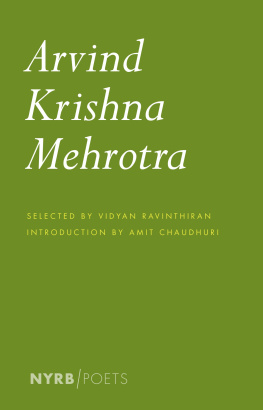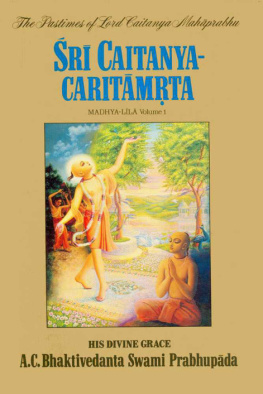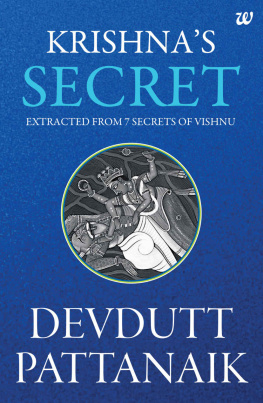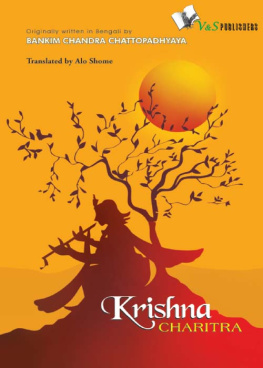T.M. Krishna - A Southern Music: Exploring the Karnatik Tradition
Here you can read online T.M. Krishna - A Southern Music: Exploring the Karnatik Tradition full text of the book (entire story) in english for free. Download pdf and epub, get meaning, cover and reviews about this ebook. year: 2013, publisher: HarperCollins, genre: Religion. Description of the work, (preface) as well as reviews are available. Best literature library LitArk.com created for fans of good reading and offers a wide selection of genres:
Romance novel
Science fiction
Adventure
Detective
Science
History
Home and family
Prose
Art
Politics
Computer
Non-fiction
Religion
Business
Children
Humor
Choose a favorite category and find really read worthwhile books. Enjoy immersion in the world of imagination, feel the emotions of the characters or learn something new for yourself, make an fascinating discovery.

- Book:A Southern Music: Exploring the Karnatik Tradition
- Author:
- Publisher:HarperCollins
- Genre:
- Year:2013
- Rating:3 / 5
- Favourites:Add to favourites
- Your mark:
- 60
- 1
- 2
- 3
- 4
- 5
A Southern Music: Exploring the Karnatik Tradition: summary, description and annotation
We offer to read an annotation, description, summary or preface (depends on what the author of the book "A Southern Music: Exploring the Karnatik Tradition" wrote himself). If you haven't found the necessary information about the book — write in the comments, we will try to find it.
A Southern Music: Exploring the Karnatik Tradition — read online for free the complete book (whole text) full work
Below is the text of the book, divided by pages. System saving the place of the last page read, allows you to conveniently read the book "A Southern Music: Exploring the Karnatik Tradition" online for free, without having to search again every time where you left off. Put a bookmark, and you can go to the page where you finished reading at any time.
Font size:
Interval:
Bookmark:
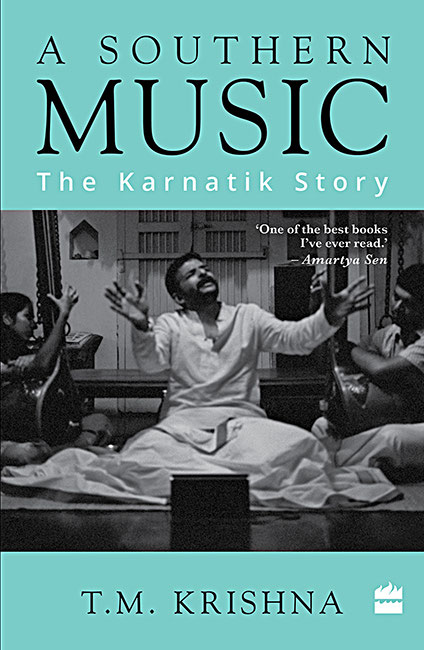
A Southern Music
The Karnatik Story
T.M. Krishna



It is all too rare that a great artist reflects deeply, systematically and in a communicative manner on the particular artistic tradition of which he or she is a part. The very idea of such reflection is rather exotic, indeed improbable: a musician sings, a painter paints, a poet writes verses. The attempt to explain what goes on in the hidden reaches of the artists mind may even be inimical to the actual business of making art happen. A Telugu verse, still circulating orally, tells us that it is fruitless, even ridiculous, to ask a poet about his own productions:
The beauties of a poem are best known
by the critic.
What does the author know?
The beauties of a woman are known
only to her husband.
What does a father know?
But in the case of music, for example, who exactly is the father (or, for that matter, the husband)? The doubt voiced by the poem applies, mutatis mutandis, to great performers, who are, as everyone knows, creative artists in their own right. In short, doing and reflecting may well be mutually contradictory. Some egregious examples come to mind, such as Glenn Goulds incomprehensible recorded talks on Bachs Goldberg Variations (a composition for which he gave us two very different, equally unforgettable renditions, the first recorded in 1955 and the second, shortly before his death, in 1981). When I first listened to the pedantic near-gibberish of these talks, I thought to myself: Please stop the torrent of words, just play the pieces! A great musician always tells us very eloquently what he or she thinks just by making music, as a dancer does by dancing.
But occasionally there is an exception to this rule, and the book before us surely fits this description. T.M. Krishna is my favourite male vocalist of Carnatic music in this generation. He is a consummate master of the intricacies of this most subtle of musical traditions, with its vast expressive range enlivened by disciplined precision, sensitivity and nuance. I think he preserves, in some natural and unprepossessing manner, something of the intimate, gentle, profoundly emotional character that was clearly central to modern Carnatic singing in its earlier, formative phase at the Maratha Tanjavur court, for example, and later in the new middle-class salons that sprung up in places like Manali (near early-colonial Madras) and Ettayapuram. This artist is also very well aware of his place within the continually evolving tradition, and he has much to say about the practices of performance in its theoretical frame and historical contexts. He has, in effect, given us a detailed meditation on all major aspects of Carnatic music a glimpse, one might say, from behind the visible surface of the kacceri, from some point deep within the artists heart and mind, remote from the microphones and even from the magic of what we can hear with our ears. Interestingly, he also has much to say on ultra-modern musical forms, including film songs and popular music, which to his great credit he sees as, in some senses, continuous with the classical tradition.
There are fascinating discussions of specific, sometimes quite technical topics and domains (the long chapter on rhythm, for example; and the fine presentation of what raga means to a performer). We also see an unusual historical sensibility informing the entire book and coming to sustained expression in the chapter on the evolution of Carnatic music over the last four centuries. A connoisseur of Carnatic singing will find here surprising articulations of what goes on in the mind of a supremely skilled performer in the course of a full-scale concert. How much is conscious at the moment when sound emerges from the throat (or perhaps from some more unfathomable place in the body)? How does the long process of training, replete with criss-crossing technical knowledge on many levels, translate into the gift of active interpretation of the musical and verbal texts? There are things that we, the listeners, will never know (and probably should not think too much about) and yet a window, at moments amazingly transparent, has been opened for us by a performer of unimpeachable authority.
If I had to pick one topic of special importance, I would go for those passages where T.M. Krishna speaks of the performers creative role vis--vis the composer and his texts. One could argue that, in this respect, both the Carnatic and the Hindustani streams allow, even require, the performer to go well beyond what is considered normative in Western classical music. Indeed, it is impossible even to begin to understand a Carnatic kriti in live performance without an awareness of this critical, active re-creation by the skilled performer. It is not only a matter of improvisation, at various possible points; rather, the creative Carnatic singer in some sense mingles with the composer throughout, a not unconstrained, yet surprisingly autonomous, partner to the expressive process. We have reason to be grateful to an artist who not only embodies this truth in practice, but who has also found accessible words to make sense of it.
This is a passionate book written by a person capable of strong feeling capable, that is, of love. You can hear this personal quality, along with the tremendous force of practice and experience, in the way he writes: The raga exists in a trained listeners mind even before it is heard. Time is not only a measure; it is a living entity that defines and redefines our sense of ourselves as individuals and as a people The most beautiful part of time in music is the idea of created time. Creativity that is born out of purely structural rules that are imposed on a raga lacks the organic quality of creativity. The author is therefore interested, as he tells us, in the way rules cease to be conditions. He is sometimes ironic: We think of both a person standing on his head for twenty-four hours and a rendition of raga bhairavi by a vidvan as awesome. He can be refreshingly irreverent: The biggest problem with musicologists is that they study Carnatic music as a science. Though he embodies a tradition given to various competing orthodoxies, he is open to experimentation. Thus, needless to say, passages of his book sound deliberately provocative and will certainly generate controversy, as befits a vital artistic tradition that has proven capable of repeatedly renewing, even re-imagining, itself over the course of six or seven generations. This book is testimony to that vitality. My hope is that it will reach readers who love Carnatic music without knowing much about it without knowing why they love it and that it will move people who have never heard a Carnatic kriti to discover what they have missed. As for the connoisseurs, T.M. Krishna has given them a candid view of how a true master of the art conceives of what he does, what he hears, what he has learnt, and what he thinks is still to come.
David Shulman
Hebrew University, Jerusalem

Dear Reader,
How would you read a book or this book? Just pick it up and start reading. True, and much as that would be entirely your call, Im tempted to leave you with one more thought. With a book of poems, you hop, skip and jump, but with a novel you would follow the authors stream. In a book of essays, the continuity exists in the overarching idea the author holds and which permeates the whole book. But that idea reveals itself to greater effect if the essays are read in a certain order. This is a personal note on how I would read this book, if at all I were the one picking it up!
Font size:
Interval:
Bookmark:
Similar books «A Southern Music: Exploring the Karnatik Tradition»
Look at similar books to A Southern Music: Exploring the Karnatik Tradition. We have selected literature similar in name and meaning in the hope of providing readers with more options to find new, interesting, not yet read works.
Discussion, reviews of the book A Southern Music: Exploring the Karnatik Tradition and just readers' own opinions. Leave your comments, write what you think about the work, its meaning or the main characters. Specify what exactly you liked and what you didn't like, and why you think so.


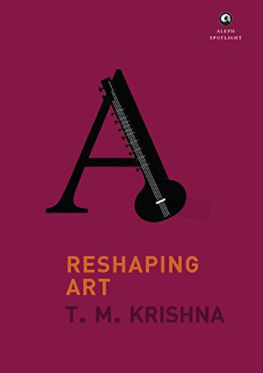
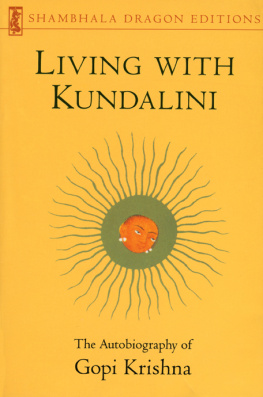
![Krishna Dharma - Mahabharata: [the greatest spiritual epic of all time]](/uploads/posts/book/213378/thumbs/krishna-dharma-mahabharata-the-greatest.jpg)


